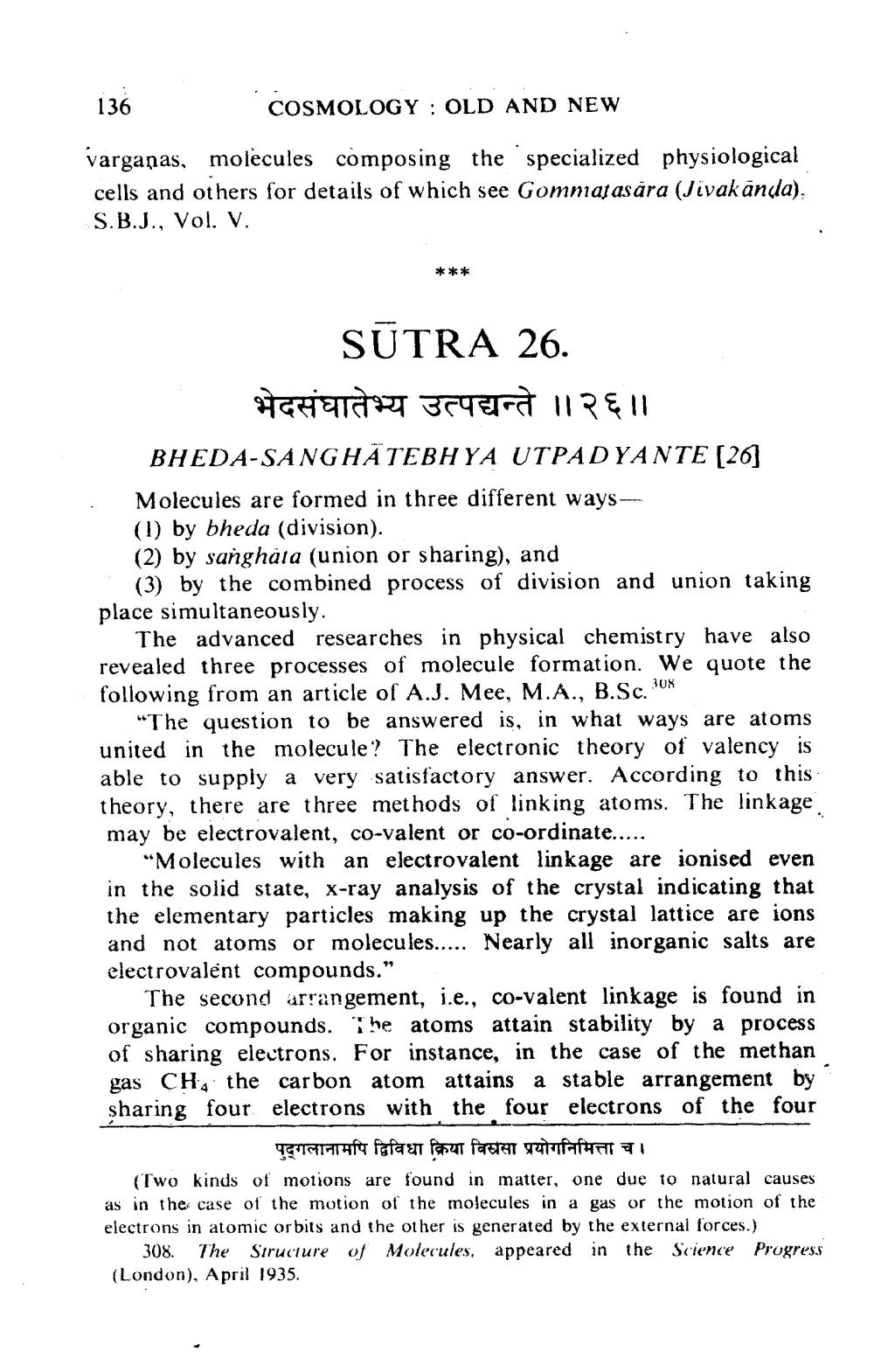________________
136
COSMOLOGY : OLD AND NEW varganas, molecules composing the specialized physiological cells and others for details of which see Gommajas āra (Jivak anda), S.B.J., Vol. V.
*
*
*
SUTRA 26.
GHETTAZ 3chard 117811 BHEDA-SANGHĀTEBHYA UTPADYANTE [20] Molecules are formed in three different ways ---- (1) by bheda (division). (2) by sanghala (union or sharing), and
(3) by the combined process of division and union taking place simultaneously.
The advanced researches in physical chemistry have also revealed three processes of molecule formation. We quote the following from an article of A.J. Mee, M.A., B.Sc. "O
"The question to be answered is, in what ways are atoms united in the molecule? The electronic theory of valency is able to supply a very satisfactory answer. According to this theory, there are three methods of linking atoms. The linkage. may be electrovalent, co-valent or co-ordinate.....
"Molecules with an electrovalent linkage are ionised even in the solid state, X-ray analysis of the crystal indicating that the elementary particles making up the crystal lattice are ions and not atoms or molecules..... Nearly all inorganic salts are electrovalent compounds."
The second arrangement, i.e., co-valent linkage is found in organic compounds. The atoms attain stability by a process of sharing electrons. For instance, in the case of the methan gas CH, the carbon atom attains a stable arrangement by sharing four electrons with the four electrons of the four
पुद्गलानामपि द्विविधा क्रिया विनसा प्रयोगनिमित्ता च। (Two kinds of motions are found in matter, one due to natural causes as in the case of the motion of the molecules in a gas or the motion of the electrons in atomic orbits and the other is generated by the external forces.)
308. The Structure of Molecules, appeared in the Science Progress (London), April 1935.




